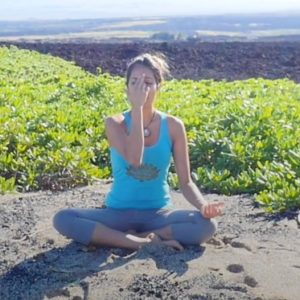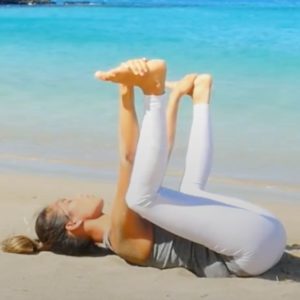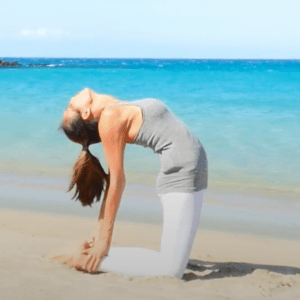Two poses for today are the Child and Four-Limbed Staff Poses.
Child and Four-Limbed Staff Poses
Child Pose – Balasana
Balasana is the Sanskrit word for Child’s Pose. Although it is a very simple posture, its effects are profound. The gentle forward-folding motion allows one to tap into deep states of relaxation, as it triggers the rest-and-digest mode of our parasympathetic nervous system. This is why Child’s Pose is often used to open a Yoga class, as a resting posture, or to wind down at the end of a sequence. By allowing us to let go of our egoic identifications, Balasana allows us to connect to our inner child, or Heart center: the part of us that is trusting, pure, and authentic.
Steps
- Sit in Vajrasana: Kneel on the ground with bent legs.
Keep the knees close to each other. Form a bowl with the soles of the feet, by bringing the heels beside the buttocks, while still sitting on them. - Straighten the spine, lift the chest, and slowly bend forward with a straight and elongated spine. Relax downward until the forehead touches the ground. The arms are placed in front of the body with bent elbows and forearms resting on the ground. Alternatively, the hands may be placed alongside the legs with palms facing upward.
- Activate the core muscles, inhale, and slowly lift the torso out of the pose.
Benefits
- Gently stretches the hips, thighs, and ankles.
- Tones the pelvic muscles and the sciatic nerves.
- Releases pressure from the spinal discs.
- Regulates the functioning of the adrenal glands.
- Activates Anahata Chakra, the Heart Chakra.
- Calms the brain and helps relieve stress and fatigue.
- It helps to eliminate anger and is very cooling for the brain.
- Soothes the personality, aids in overcoming the egoic identification.
- Getting in touch with the essence of our being – awakens the soul.
Four-Limbed Staff Pose
Chaturanga Dandasana or Four-Limbed Staff Pose, also known as Low Plank, is an asana in modern yoga as exercise.
- Sit in vajrasana.
- Walk your hands forward and come in plank pose with your hands under your shoulders.
- Straighten your legs, till they are a few inches above the ground and parallel to it, with your toes turned inwards.
- On the exhalation, bend your elbows until your shoulders are at the same height as your elbows.
- Exhale. Come up to plank pose. Exhale.
- Sit in vajrasana.
Benefits
- This asana strengthens the wrists, arms, and shoulders.
- It also helps straighten the spine, and strengthen the back and abdominal muscles.
- It helps keep the body aligned, maintaining core stability.
- It helps increase stamina. Sportspersons do the plank pose as part of cooling down exercises after playing.




